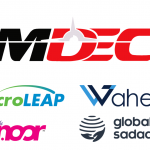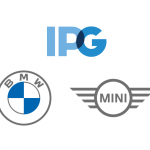According to the MAGNA Global Advertising Forecast of December 2021, the global advertising market is finally seeing happy days.
The “media centric” research by MAGNA (the centralized Mediabrands resource that provides media marketplace intelligence and negotiation prowess for Mediabrands agency teams, affiliates and clients), monitors net media owners advertising revenues based on a bottom-up analysis of financial reports and data from media trade organizations; other ad market studies based on tracking ad insertions or consolidating agency billings.
So far, the MAGNA approach seems to be providing the most accurate and comprehensive picture of the market as it captures total net media owners’ ad revenues coming from national consumer brands’ spending as well as small, local, “direct” advertisers.
The forecasts are based on economic outlook and market shares dynamic, and the full report contains more granular media breakdowns and forecasts to 2025, for 70 markets.
Key Findings – Global and Asia Pacific
Globally, media owners’ advertising revenues have grown by +22% in 2021 to reach a new all-time high of $710 billion, following a decline of -2.5% in 2020. Advertisers spent an additional $126 billion on top of the 2020 tally. The global marketplace is now 19% larger than pre-COVID levels and will continue to grow steadily in 2022 (+12%).
Advertising revenues from traditional advertising formats (TV, radio, OOH, print, cinema) grew by $21 billion (+9%) following a -17% decline in 2020, to reach $268 billion, which has put traditional formats at 90% of the pre-COVID market size (2019).
Digital advertising sales i.e. search, social, video, banners, digital audio et al increased by $105 billion (+31%) to reach $442 billion; digital formats now represent 62% of total advertising sales worldwide.
Advertising growth is fuelled by strong economic recovery (global GDP +5.9%) and personal consumption, but the magnitude of growth rates suggests it is more than just the marketplace catching up post-COVID and organic growth factors are driving the tremendous digital acceleration of 2021. Among those factors are the growth in digital media consumption and the explosion in e-commerce scale and depth, which prompted big brands and, especially, small businesses to increase digital marketing activity and ramp up their use of social and search formats.
All major industry verticals increased ad spend this year. Drinks, Entertainment, Retail and Technology were among the most dynamic spenders, while Automotive ad spend stalled after a strong first half, due to the semiconductor shortage reducing production and sales.
Ad spend grew in all 70 ad markets monitored by MAGNA and reached double-digits in 68 out of 70.
Several of the world’s largest markets posted above-average growth including the US (+25%), the UK (+34%), Brazil (+30%), Canada (+27%) and Australia (+23%), while China (+17%) and India (+14%) experienced below average growth.
Looking at 2022, supply chain issues will slow down some verticals, and tail of COVID may still inhibit growth in a small number of markets, but growth factors are strong enough for MAGNA to forecast further growth in advertising spending. Economic growth (global GDP +4.9%) and large-scale vaccination will spur consumer mobility and the recovery of some laggard verticals (Travel, Movies), while digital growth will continue to grow organically, and no less than three cyclical events (Winter Olympics, US Mid-Term elections and FIFA World Cup) will bring billions of incremental marketing budgets.
In this environment, the global marketplace will grow by +12% to reach $795 billion. Linear ad format growth will slow down to +4%, which is still a stronger performance than the pre-COVID trends. Digital ad formats are forecasted to grow by +17%.
The Asia Pacific advertising economy grew by +16.5% in 2021, a significant acceleration from 2020’s COVID-impacted -0.8%. Growth was powered by large markets such as China (+16.7% in 2021, +8.0% expected in 2022), and India (+14.0% in 2021, +14.5% expected in 2022). In 2022, APAC advertising revenues will increase by +11.2% to $235 billion, 25% above the pre-COVID spending level, driven by digital advertising growth (+16.2%).
Linear advertising spending, i.e. Linear TV, Print, Radio, and OOH, grew by +6.5% in 2021 in APAC. In 2022, media owners’ linear advertising revenues will increase by a meagre +2.7% to represent 34% of total advertiser budgets.
APAC Digital advertising revenues increased by +23% in 2021 and will increase by +16% in 2022 to represent 66% of total advertiser budgets. In 2021, growth primarily came from mobile advertising campaigns (+28% to nearly 80% of total digital budgets).
Malaysia Overview
Media owners advertising revenues in Malaysia increased by +18.2% in 2021 to reach MYR 5.2bn ($1.2bn). The economy grew by +4.2% on a real GDP basis, following 2020’s -6.3% decline. While this is lower than prior expectations, brands spent anyway, especially on digital advertising formats.
Malaysia suffered a spike in COVID cases in the summer and fall of 2021, to more than 20k per day. However, with more than 70% of the population now vaccinated, so while this outbreak put a damper on spending, looking forward into 2022, consumer behaviour will largely return to normal.
In this environment, linear advertising revenues increased by +4% to MYR 2.1bn. This is only a very small bounce compared to 2020’s tremendous -39% decline in linear advertising spending. Linear budgets remain at just 64% of their pre-COVID levels. Because linear ad spending will stabilize and then erode from here as consumers continue to shift to digital media formats, linear advertising revenues will never again approach their pre-COVID highs. TV spending, which increased by +14%, came closer to offsetting its 2020 COVID losses.
TV budgets are now 90% of their pre-COVID total. Finally, while cinema screens were open earlier in the year, they have ceased operation until further notice. These COVID impacts combine to cause advertisers to take a short term and cautious view of deploying budgets. Many brands are even booking TV by the week to ensure they are not caught off guard by a return to quarantine and suffer wasted budgets.
Finally, fewer eyeballs on the road means that OOH spending bounced just +18% this year following 2020’s -44% decline.
Digital advertising spending, on the other hand, grew by +30% to reach 60% of total budgets. This was the strongest performance since 2014. Digital advertising spending was led by spending on mobile devices, which increased by +39% and represent 70% of total digital budgets.
By format, spending was led by social media (+37%), video advertising (+30%), and search (+30%).
Looking forward, digital advertising spending will continue to significantly outperform linear budgets, and by 2026, digital formats will represent 72% of total advertiser budgets.
In 2022, ad spending is forecasted to grow by +12% to reach MYR 5.9bn ($1.4bn). GDP will continue to grow by mid-single digit percentages, and linear budgets will take another year to stabilize before shifting towards stagnation or decline in 2023 and beyond.
According to Fan Chen Yip, Chief Investment Officer of Mediabrands Malaysia: “With most of the Malaysian population now vaccinated, we predict some buoyancy in the market as we move into 2022. We are pleased to report that 2021 will close with an 18.2% growth over 2020, and are forecasting 2022 ad spends to grow by 12% over 2021, taking ad-ex to just under RM6 billion in a year’s time. Amongst linear advertising revenues, TV is proving to be most resilient as it has recovered to 90% of pre-Covid levels. Digital spends reached 60% of total 2021 advertising budgets, on par with global levels. We anticipate the dominance of digital spends to take a stronger trajectory over the next few years, which will create an urgency for liner media to further accelerate digitalization efforts.”
According to Leigh Terry, CEO Mediabrands APAC: “As the pandemic continues to impact consumer lifestyle options and choices across many markets, it comes as no surprise that accelerated digital ad revenues continue to take share, growing by +23% in 2021, with a predicted +16% in 2022. However we can see that APAC consumption is even more significantly skewed towards E-commerce than it is in mature western markets. Giants like Alibaba, JD.com, Rakuten, and Pinduoduo, have grown to the point where shopping online is just as large as shopping in person, while e-commerce sales account for an average market share of 20% of total retail sales in the West.”
Vincent Létang, EVP, Global Market Research at MAGNA and author of the report, said: “The global ad market recovered above and beyond the economic recovery in 2021. Mature linear ad formats recovered to 90% of the pre-COVID level, just as the economy did. Digital ad formats, by contrast, grew much faster than expected, driven by multiple organic growth factors. Traditional, brand- and privacy-safe editorial media remain crucial to consumer brands, as showed by the strong demand boosting TV costs in 2021, but marketers are increasingly diversifying into digital formats to optimize reach, mitigate costs, and drive sales more rapidly through e-commerce. On top of that, millions of small, local businesses and “direct” advertisers are investing in digital marketing to develop digital-centric or hybrid business models, to complete a perfect storm for growth.”


MARKETING Magazine is not responsible for the content of external sites.









